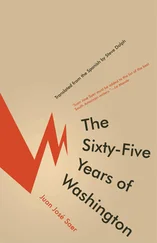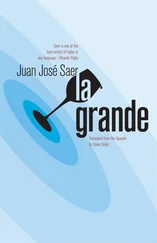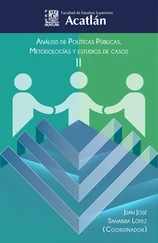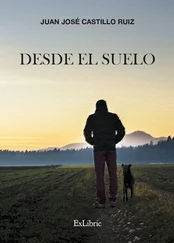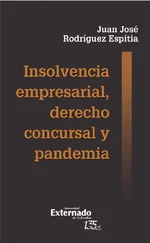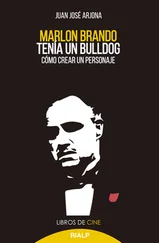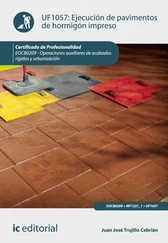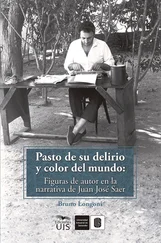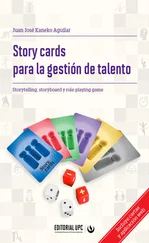Juan José Saer - Scars
Здесь есть возможность читать онлайн «Juan José Saer - Scars» весь текст электронной книги совершенно бесплатно (целиком полную версию без сокращений). В некоторых случаях можно слушать аудио, скачать через торрент в формате fb2 и присутствует краткое содержание. Год выпуска: 2011, Издательство: Open Letter, Жанр: Современная проза, на английском языке. Описание произведения, (предисловие) а так же отзывы посетителей доступны на портале библиотеки ЛибКат.
- Название:Scars
- Автор:
- Издательство:Open Letter
- Жанр:
- Год:2011
- ISBN:нет данных
- Рейтинг книги:5 / 5. Голосов: 1
-
Избранное:Добавить в избранное
- Отзывы:
-
Ваша оценка:
- 100
- 1
- 2
- 3
- 4
- 5
Scars: краткое содержание, описание и аннотация
Предлагаем к чтению аннотацию, описание, краткое содержание или предисловие (зависит от того, что написал сам автор книги «Scars»). Если вы не нашли необходимую информацию о книге — напишите в комментариях, мы постараемся отыскать её.
explores a crime committed by a laborer who shot his wife in the face; or, rather, it explores the circumstances of four characters who have some connection to the crime. Each of the stories in Scars explores a fragment in time when the lives of these characters are altered, more or less, by a singular event.
Scars — читать онлайн бесплатно полную книгу (весь текст) целиком
Ниже представлен текст книги, разбитый по страницам. Система сохранения места последней прочитанной страницы, позволяет с удобством читать онлайн бесплатно книгу «Scars», без необходимости каждый раз заново искать на чём Вы остановились. Поставьте закладку, и сможете в любой момент перейти на страницу, на которой закончили чтение.
Интервал:
Закладка:
Soon I reach the suspension bridge, which I have seen approach me. Its columns, darkened and gleaming from the water, are only half-visible here and there through breaks in the fog. A gorilla wrapped in a black cloak, his head covered by a watchman’s cap, is standing outside a gray sentry box. He is completely still, his eyes fixed on the fog. Then he disappears. He is behind me. Then the bridge too. Now the old waterfront extends ahead, its oil-stained asphalt covered with fractures and holes. Now the concrete railing, its endless, weathered balustrade. Every so often, a missing column breaks the uniformity. And sometimes a broken column has fallen to pieces over the enormous gray slabs of the wide sidewalk. From beyond the waterfront I see the leafless, tall poplars approach me and then disappear. The fog approaches, a solid, white wall. The car moves through it, a shining wedge behind which the fog closes again. Now I’m on the new waterfront, wider, without immediate reference points, and for a moment there is nothing but the car and the fog, in a kind of stillness. Nothing but the solid, off-white mass where particles rotate in space, like tiny planets, and the car moving but with the illusion of not advancing through the uniform density of the fog. Suddenly, the decayed top of a tree appears and then disappears, behind me, and for a moment it’s clear that I have been advancing, although the return of the complete fog renews the illusion of motionlessness.
By now the gorillas will be leaving their burrows, vacating their foul-smelling nests, examining their decaying teeth in the bathroom mirror, voiding their excrement, looking at the fog through the window, turning groggily in the beds where they’ve copulated with their reddish-sexed females, with quiet moans and brutal sobs; the females are looking now at the males in bed, hearing them move through the poorly illuminated kitchens as they prepare breakfast before leaving for work. Then they will shut their eyes, curl up between the warm sheets, and fall back to sleep until midmorning, after which they will get up and go out to the market to buy food while the males write incoherent reports on oversized log books in offices with tall ceilings and wood floors. They open their front doors, belch stupidly, look at the fog, and hunch over as they walk in the rain to the corner to wait for the bus. In the bus they plaster themselves against each other, still puffy from sleep, rubbing their fleshy asses and smearing the scent over their faces. They utter broken sounds, shake their heads, open their eyes enormously wide, and make unintelligible gestures with their hands.
The yellow walls of a bus stop shelter pull me momentarily from the illusory stillness, then they pass and are left behind. The first houses on the new waterfront, opposite the river, start to appear, withered and blurry. On the other side, the river has disappeared. At a spot where the waterfront makes a wide turn toward the river I stop the car and shut it off. The silence of the quiet engine becomes more monotonous than the monotonous hum of the running engine; the sound echoes for a moment in my head and then dissolves. I stare at the fog, toward what I imagine is the riverbank. Slight breaks in the fog allow me to imagine that I see the surface of the water. Suddenly, a shining black blur appears and disappears. It reappears and is erased again. Then it reappears and hangs for a moment. I just make out the back legs and tail of a horse. The tail shakes and then everything disappears again. Once again the fog through the windshield is empty. With the stillness of the wiper blades, the glass is covered with tiny drops that leave a thin trace of their impact. I turn on the wipers and again the droplets gather and disappear and the glass is left clean. For three minutes I wait for the dark blur of the horse to reappear, but nothing does, so I turn the engine on again, harshly, and move on.
I reach Guadalupe, drive through the roundabout, and turn back onto the waterfront in the opposite direction. If not for the memory of having reached the end of the waterfront and having gone through the roundabout, there would now seem not only to be no movement, but no direction. No direction, except that I face something — my face, like the front of the car, looks at something — but without the memory of having gone through the roundabout on Guadalupe, I wouldn’t know what. Then the tree reappears, fragmentary and wet, above me, the top branches swallowed by the fog; it approaches slowly and is left behind.
I retake the old waterfront, and when I reach the mouth of the suspension bridge — the gorilla in the police hat has disappeared, only the gray sentry box remains — I turn onto the boulevard instead of continuing on the harbor road. I follow the boulevard to the west, and after passing the tracks I see the old train station, a large, brown building. Its walls are wet, and its broad doors and windows are dim. Two female gorillas with identical pink umbrellas exit from the main entrance. A row of taxis is parked on the street, parallel to the immense facade. In some, I can make out the blurred figures of the gorilla drivers. They are barely distinguishable. On the boulevard, the large trees are still and wet. Now there is a bit more traffic, slow-moving cars and buses. When I reach the first streetlight, ten blocks from the avenue, the fog is already clearing. The light is red and I stop instinctively. The engine hums, and the wiper blades, with a regular, even sound, form semicircles as they gather and sweep the water away. The red light turns off, and by the time it changes to green I’m already crossing the intersection. Above me, out of the fog, the gothic spire of the Adoratrices appears. Five blocks later, just before I reach the second streetlight, I slow down to pass the mill. The light is green. I turn north onto Rivadavia. On the left-hand side stands a row of old, modest, single-story houses, and on the right the rail yard wasteland, and beyond that the long wall surrounding the mill, barely visible through the side window. The long, solid wall of un-plastered brick is bowed at intervals toward the rail yard by some cylindrical structures that, seen through the side window, take on insane proportions. Then I turn left again, onto a rough cobblestone street that makes the car frame vibrate and shudder, and then I turn south onto 25 de Mayo. I drive one block and cross the avenue, still south on 25 de Mayo. As the fog clears the streets fill with gorillas. But the rain continues. I pass the Banco Provincial — its doors are open and gorillas hurry in and out. First I see the round clock, its roman numerals marking eight twelve, then the momentary flash of glass in the revolving door as it swallows and spits out the gorillas. Then everything is left behind. Next I pass the Palace Hotel, and at the end of the same block, on the opposite corner, the Monte Carlo bar. To the left is the back of the post office, and beyond that the plaza, and on the opposite side the bus station platforms. I cross the intersection, still on 25 de Mayo to the south, and everything is left behind. On the next corner I turn right, travel a block, then turn left onto San Martín to the south. Every minute more gorillas flood the streets. Some are driving, others stare stupidly from bus windows, still others crane their necks out of their raincoats as they peer from their doorways, preparing to leave. San Martín looks washed by the rain. Washed, but still dirty, since the days-long rains have turned the streets into dark swamps, thick and wet with mud from the shoes of the thousands of gorillas that walk them. Six more blocks and I reach the Plaza de Mayo. I have to wait briefly at a streetlight; the red light keeps me from moving. Then the red light shuts off, the green light comes on, and I turn right onto the plaza and follow the road around toward the courthouse. To my left are the palms and the orange trees, and then the tall oaks, in between which the reddish paths intersect. Ahead, the front of the courthouse approaches. I cross the intersection and turn into the rear courtyard. I park the car in the thin, cobblestone space and stop the engine and the wiper blades. For a moment I wait inside the silent interior of the car, still hearing the fading echo of the engine and the rhythmic murmur of the wiper blades. A uniform sound. Then I pick up the briefcase from the rear seat, step out of the car, the rain on my face, lock the door, and enter the building.
Читать дальшеИнтервал:
Закладка:
Похожие книги на «Scars»
Представляем Вашему вниманию похожие книги на «Scars» списком для выбора. Мы отобрали схожую по названию и смыслу литературу в надежде предоставить читателям больше вариантов отыскать новые, интересные, ещё непрочитанные произведения.
Обсуждение, отзывы о книге «Scars» и просто собственные мнения читателей. Оставьте ваши комментарии, напишите, что Вы думаете о произведении, его смысле или главных героях. Укажите что конкретно понравилось, а что нет, и почему Вы так считаете.

